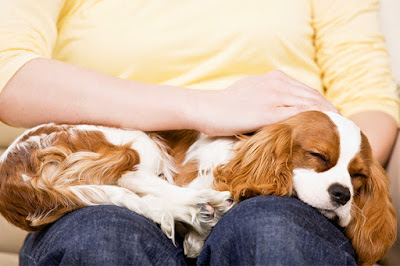Originally from Tibet, Shih Tzu’s are known for their adorably short snout and clever, playful personalities. As they are classified as a snub-nosed breed of dog, they require a little extra care if you’re planning on travelling with them. Flying with such breeds has been difficult in the past.
Whether it is domestic pet travel, or an international pet relocation, you will eventually have to fly with your pet. But, with the proper preparation and appropriate precautions, it can be a safe and comfortable journey for your pet. Here’s how to prepare for overseas travel with your Shih Tzu.
Preparing Before your Flight
There are a few things you can do to prepare your Shih Tzu for a flight, taking into consideration the extra care a snub-nosed breed needs while flying.
- Health Check Up - You should visit your vet before any potential travel. This is especially important if your pet has recurring or chronic health issues. If your pet is fit, the risk of any issues while traveling is miniscule. Schedule a vet visit and get a clean bill of health before embarking on a journey, no matter how short or long.
- Pet Crate and Training - When moving overseas, pets travel by air. Flying is the fastest method to cover large distances, and as pets can only fly in a pet crate, it s important to choose the correct one. Pets can only fly in an IATA approved fiber crate. Such crates are approved for air travel and meet the necessary safety standards.
Once you choose an appropriate crate, it is important to crate train your pet. Whether they travel in cabin or in the cargo hold, they will spend the entire duration of their flight in the crate, so it is important to train them to be comfortable.
Start by letting them freely interact with the crate. Reward positive interaction and repeat the process daily until they are comfortable being inside it. Once they are relaxed, you can slowly start taking them outside in their crate.
Even if you don’t plan on travelling, you’ll need to travel with your pet at some point, and as a crate is the safest place for them to be, it is useful to train them to stay calm when inside it.
- Travel in Cool Weather - Snub-nosed breeds do not enjoy high temperatures. You’ll find that a vast majority of airlines will not allow a snub-nosed pet to travel in the summer for this reason. To get around this, plan your travel with your Shih Tzu during the winter months or in cooler climate. Any risk posed by heat is minimized if you plan your travel appropriately
Once you choose an appropriate crate, it is important to crate train your pet. Whether they travel in cabin or in the cargo hold, they will spend the entire duration of their flight in the crate, so it is important to train them to be comfortable.
Start by letting them freely interact with the crate. Reward positive interaction and repeat the process daily until they are comfortable being inside it. Once they are relaxed, you can slowly start taking them outside in their crate.
Even if you don’t plan on travelling, you’ll need to travel with your pet at some point, and as a crate is the safest place for them to be, it is useful to train them to stay calm when inside it.
- Choose a Pet Friendly Airline - It is important to choose a pet-friendly airline. The recommendation of travelling in cooler climate isn’t one made due to the plane itself. Rather, it is because of the time spent by your pet on the runway, where temperatures range from one extreme to the other. Spending too much time on the hot runway is not ideal for your Shih Tzu.
This is where a pet-friendly airline comes in. Such an airline knows the delicate requirements of pets, and boards them on the plan on a priority basis. They also will have a pressure and temperature-controlled cargo bay, circulating the same air as the cabin, which makes it as safe to travel in as the cabin. Pet travel via air is only unsafe if an incorrect airline is chosen.
This is where a pet-friendly airline comes in. Such an airline knows the delicate requirements of pets, and boards them on the plan on a priority basis. They also will have a pressure and temperature-controlled cargo bay, circulating the same air as the cabin, which makes it as safe to travel in as the cabin. Pet travel via air is only unsafe if an incorrect airline is chosen.
Flying a snub-nosed dog can be challenging. To fly a Shih Tzu, you need to plan, choose a pet friendly airline, and fulfil a fair number of health and safety requirements. This, when combined with the paperwork processes, can lead to stress about your move.
For safe
travel, ensure you plan ahead and seek expert help, so that they can
arrange an appropriate pet-friendly airline and help you with the documentation
and preparation before flying. If you have any queries or concerns about your international pet relocation, contact us at query@carrymypet.com.




